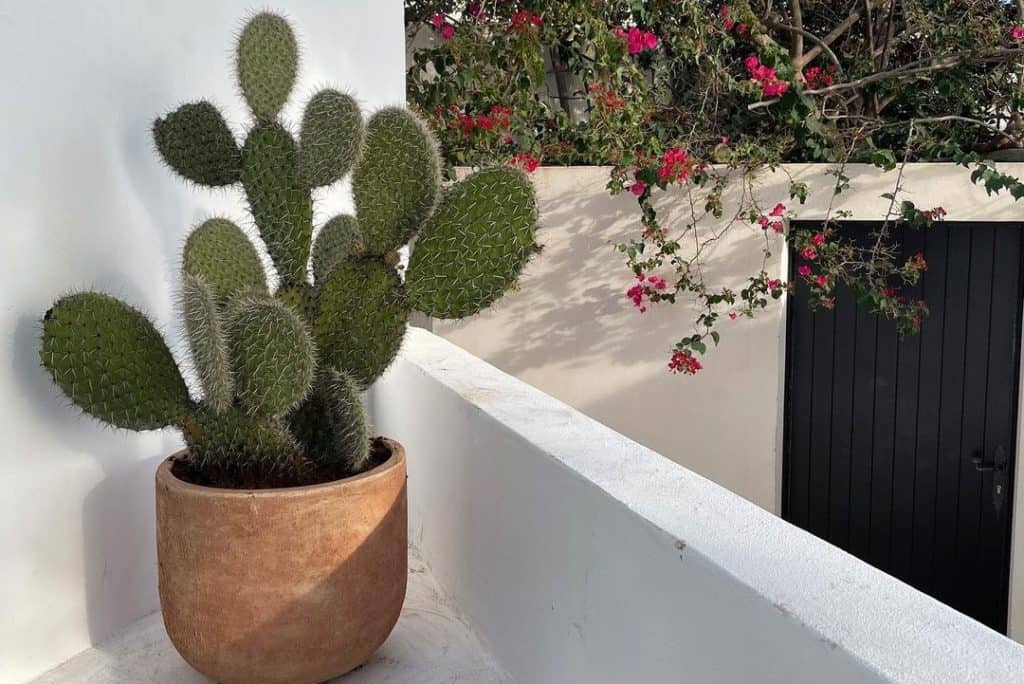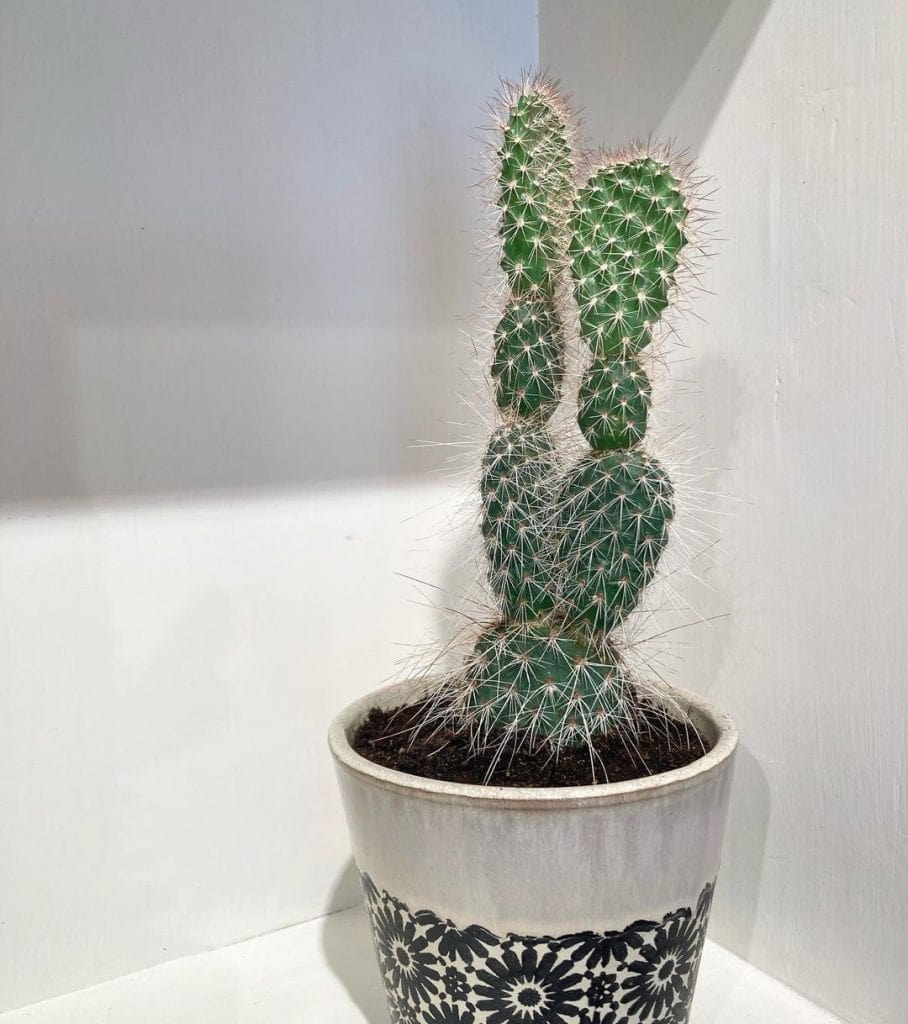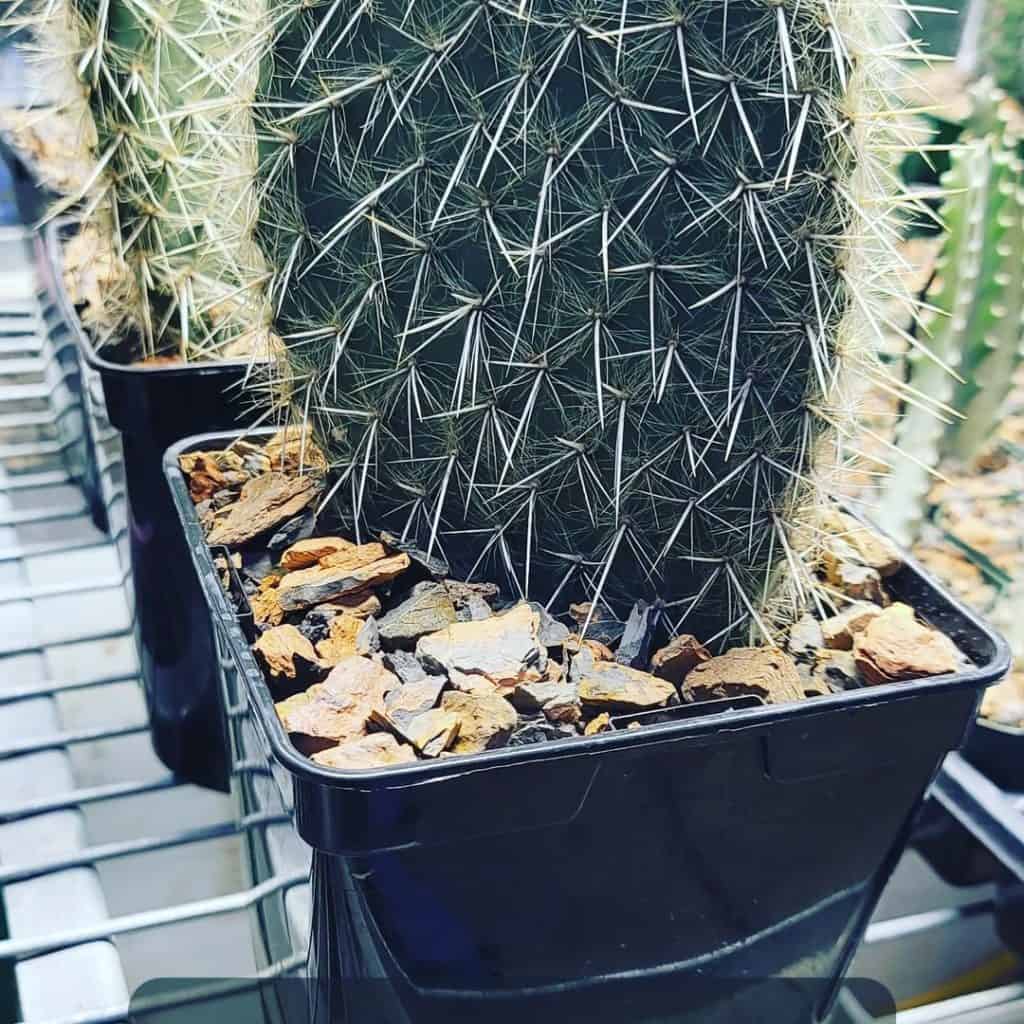Mexican Marvels: Opuntia pilifera’s Striking Spines and Pads
The Opuntia pilifera is one bizarre-looking cactus! Native to central Mexico, this prickly character is covered in a wild tangle of spines and fuzzy, gray-green pads. It’s an oddball for sure, but dig a little deeper and you’ll find some pretty cool traits that make the Opuntia pilifera a unique desert marvel. From its spiky defenses to its hot pink flowers, this Mexican cactus is full of surprises. Let’s take a closer look at how to care for this quirky, spine-tingled plant.

Contents
About Opuntia pilifera
Native to parts of central Mexico, the Opuntia pilifera goes by some hilarious local nicknames like “piaviachi”, “cocoche loco” (crazy cocoon), and “nopal crinado” (hairy prickly pear). And those names are spot on!
This cactus has a quirky growth habit, developing a brown, tree-like trunk and branches covered in flat, green-gray pads. The pads are absolutely covered in teeny white spines that give the whole plant a fuzzy appearance. To top it off, bright pink flowers burst out from the tips in blooming season. Talk about a showstopper!
Related Post:
195 Opuntia Varieties [With Pictures]
How to Care for Opuntia pilifera
Light
Like most cacti, the Opuntia pilifera thrives in direct sunshine. Lots and lots of it! Plant yours in an open, sunny spot like a garden or balcony where it can bask for hours. During summer’s peak heat, you may want to give it a little afternoon shade to prevent sunburn.
If keeping indoors, position it right in a bright, sunny window. Or use a grow light, leaving it on for 12-14 hours per day, making sure to position the light just 6-12 inches away from the cactus.

Water
Opuntia pilifera likes its soil on the drier side, just like other cactus species. Go easy on the watering can – these guys are way more likely to rot from overwatering than get thirsty!
In spring, summer and fall, give your cactus a weekly or bi-weekly soak, until excess starts draining out the bottom. Let the soil dry out completely before watering again. Switch to monthly watering in winter when growth slows.
Always use filtered or rainwater if possible, as tap water can make the soil too salty over time. And be careful not to splash that fuzzy stem – wet fuzz tends to rot.
Soil
Your Mexican hairy buddy craves a well-draining, gravelly soil mix with lots of airflow. A perfect blend is 2 parts vermiculite (for air circulation), 2 parts coarse sand, and 1 part coco coir or peat moss. You can add a sprinkle of vermicompost for extra nutrients.
Fluff and loosen the soil annually to prevent compaction. And monitor that drainage – if water isn’t rapidly flowing through the soil, it’s too dense.

Fertilizer
A gentle, diluted cactus fertilizer every 4-6 weeks in spring through fall will give Opuntia pilifera an added boost. Look for low-nitrogen fertilizers with more phosphorus and potassium for blooming and pad growth.
Avoid fertilizing in winter when the plant is dormant. And beware of over-fertilizing – if new growth at the base slows or turns yellow, that’s a sign to ease off the feed.
Temperature and Humidity
Hot and dry, just how Opuntia pilifera likes it! Daytime temperatures between 68°F and 95°F with low humidity are ideal. Avoid letting temps drop below 50°F or humidity rise too high. Good airflow is a must.
Pests and Problems
Keep an eye out for common cactus pests like spider mites, mealybugs and aphids which can create webbing, distorted growth and yellowing pads. Anthracnose (spiral black spotting), rot diseases, and rodents can also afflict this cactus.
Pruning
Since Opuntia pilifera naturally stops outward growth at a moderate size, pruning is super easy. Just snip off any dead or damaged pads or branches as needed.

Potting and Repotting
For indoor plants, use a breathable clay pot not too small or too large. Repot annually in spring or fall, refreshing the soil and giving the roots room to spread.
How to Propagate Opuntia pilifera
Opuntia pilifera is a prolific propagator by cuttings! Here’s how to grow a new plant from a pad:
- Using clean shears, snip off a healthy pad or branch tip
- Allow the cutting to callus over for 7-10 days before planting
- Fill a pot with well-draining cactus soil
- Stick the calloused end of the cutting into the soil, about 1 inch deep
- Place in a warm, brightly lit spot and wait for new growth to appear in 2-4 months!
So what are you waiting for? Add some spiky Mexican magic to your plant collection with the eye-catching, sun-loving Opuntia pilifera. Those wild fuzzy pads and pink blooms are guaranteed to turn heads!
